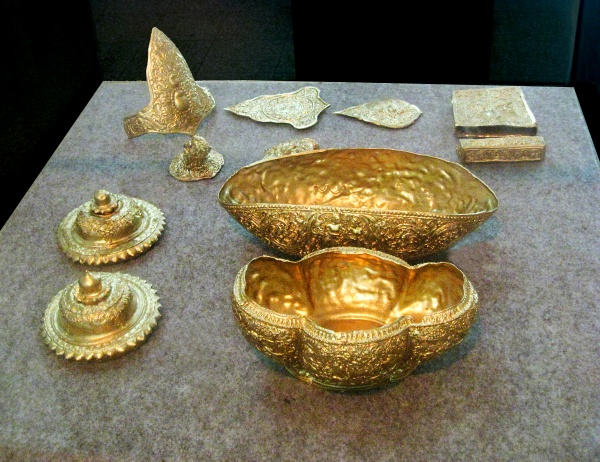Facts About Wonoboyo hoard
The Wonoboyo Hoard is a remarkable archaeological discovery from the 9th-century Medang Kingdom in Central Java, Indonesia. Unearthed in October 1990 in the small hamlet of Plosokuning, Wonoboyo village, Klaten, near Prambanan, this treasure trove was discovered during an irrigation project. Workers stumbled upon three large terracotta jars filled with over 1,000 ceremonial items, including bowls, water dippers, arm bracelets, rings, plates, earrings, and coins.
Weighing a total of 16.9 kilograms, the hoard comprises 14.9 kilograms of gold and 2 kilograms of silver. Among the fascinating finds is a bulbous golden bowl intricately carved with a scene from the Ramayana, a golden tray, and various other ornate artifacts. Today, these treasures are housed in the National Museum of Indonesia in Jakarta, with replicas displayed at the Prambanan Museum.
This discovery is celebrated as one of Indonesia's most significant archaeological finds, shedding light on the wealth, economy, art, and culture of the 9th-century Javanese Medang Kingdom. The artifacts reveal the exceptional skills of ancient Javanese goldsmiths, showcasing detailed engravings and inscriptions. One notable inscription includes the script "ta" which was a unit of currency in ancient Java. The hoard is believed to date back to the reign of King Balitung (899–911) and is thought to have belonged to a noble or a member of the royal family.

 Timor Leste
Timor Leste